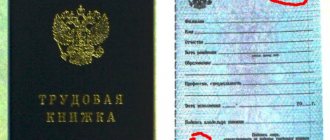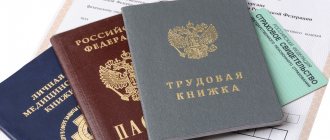The single social contribution is a type of fee that was actually abolished in 2010. However, many accountants, in the old-fashioned way, refer to contributions for pension, social and health insurance using this term. Let us consider in the material what rates of social fees are set in 2020.
According to Article 419 of the Tax Code of the Russian Federation, the payers of social contributions are policyholders. That is, those who make payments and other remuneration: organizations, individual entrepreneurs and individuals.
Social taxes in 2020: rates
Social fees include:
- pension insurance;
- social insurance in case of illness or maternity;
- health insurance;
- injury tax.
Until 2020, the administration of each type of deduction was carried out by the Funds. However, now the Federal Tax Service is in charge of all of them. The only exception was the fees for injuries, which remained under the jurisdiction of the FSS. Tariffs for the period from 2020 to 2020 are established in Article 426 of the Tax Code of the Russian Federation. The size of deductions for social needs, the total rate of which is 30%, is most conveniently presented in the table.
| Type of contribution | OPS, % | VNIm (OSS), % | Compulsory medical insurance, % |
| If the maximum base value does not exceed the limit of RUB 1,021,000. — for OPS, 815,000 rub. - for OSS | 22 | 2,9 | 5,1 |
| If the amount of the base exceeds the limit for OPS | 10 | — | 5,1 |
Please note that payments in excess of the maximum base are not subject to VNIM contributions. The amount of contributions for injuries, which, as we remember, must be transferred to the Social Insurance Fund, depends on the main type of activity of the company. It must be confirmed annually, depending on this the deduction rate will be from 0.2 to 8.5%.
What is a single tax payment and why is it needed?
In 2020, individual payers had the opportunity to pay all property taxes at once, without waiting to receive tax notices and without wasting time filling out various payment details.
For this purpose, within the framework of the Tax Code of the Russian Federation, a single tax payment mechanism was implemented - a convenient and prompt way to pay property taxes without any penalties or fines (Federal Law No. 232-FZ dated July 29, 2018).
A single tax payment is a voluntary contribution by an individual to pay taxes. This payment replaces the payment of three property taxes at once - transport, land and property tax for individuals (Article 45.1 of the Tax Code of the Russian Federation).
At the same time, in the very near future it will be possible to pay personal income tax through a single payment. For example, in cases of receiving income from the sale or rental of real estate. The Ministry of Finance has prepared a corresponding bill with amendments to the Tax Code of the Russian Federation.
A single tax payment allows you to:
- pay all property taxes in one total amount;
- pay taxes for any third party, including a foreigner;
- distribute the tax burden evenly throughout the year, making a single payment in advance;
- avoid the accrual of fines and penalties;
- save time on filling out payment documents.
Reduced rates
Some categories of payers can count on the use of reduced tariffs. The full list of these categories is in Article 427 of the Tax Code of the Russian Federation, but in particular they include:
- business companies involved in the implementation of the fruits of intellectual activity;
- organizations and entrepreneurs who have entered into special agreements with the governing bodies of special economic zones;
- Russian organizations working in the field of information technology.
For companies and entrepreneurs that meet the requirements of Article 427 of the Tax Code of the Russian Federation, the following tariffs are provided:
- OPS - 20%;
- Compulsory medical insurance and VniM - 0%.
STS criteria in 2020: table
It is important to take into account that the transition to “simplified” is only possible if all requirements are met at the same time. For convenience, we have collected all the conditions for the transition and work to the simplified tax system that are in force in 2018-2019. in one table:
| Transition criteria and conditions for applying the simplified tax system in 2018-2019 | Current condition or limit | Who does it apply to? | Norm of the Tax Code of the Russian Federation |
| By type of activity | The entities listed in paragraph 3 of Art. 346.12 of the Tax Code of the Russian Federation, including foreign companies, institutions (state-owned and budgetary) | Individual entrepreneur and legal entity | pp. 2-10, 17, 18, 20, 21 p. 3 art. 346.12 |
| Compatible with other modes | Not compatible with:
| Individual entrepreneur and legal entity | pp. 13, 11 clause 3 art. 346.12 |
| Availability of branches | Unacceptable | legal entity | pp. 1 clause 3 art. 346.12 |
| Management structure | Participation of other organizations no more than 25% | legal entity | pp. 14 clause 3 art. 346.12 |
| Residual value of fixed assets | No more than 150 million rubles. (for an LLC to switch to the simplified tax system from 2020, compliance with the limit as of 10/01/2018 is required) | legal entity | pp. 16 clause 3 art. 346.12 |
| Average number | No more than 100 people. | Individual entrepreneur and legal entity | pp. 15 clause 3 art. 346.12 |
| “Transitional” revenue limit (STS 2018-2019) | No more than 112.5 million rubles. for 9 months of the year preceding the transition to “simplified” | legal entity | clause 2 art. 346.12 |
| Maximum revenue under the simplified tax system 2018-2019, allowing the use of the regime | No more than 150 million rubles. in a year | Individual entrepreneurs and legal entities working on simplified terms | clause 4 art. 346.13 |
Calculation of the amount of deductions
Calculation of insurance premiums in the form KND 1151111 is submitted quarterly to the Federal Tax Service by the 30th day of the month following the reporting period. The procedure for filling out this document is contained in the Order of the Federal Tax Service of Russia dated October 10, 2016 No. ММВ-7-11/ [email protected] The direct calculation of the deduction amounts is made using a simple formula:
Amount of monthly payment (OPS, compulsory medical insurance, VNIM) = Payments accrued to the employee from the beginning of the year to the end of the current month × Rate of a specific contribution.
Procedure for making a single tax payment
A single payment can be made at any time during the current year either by the payer himself or by any other third party on behalf of this payer. You can deposit any amount. There is no time limit for making a single payment. The payment is made to the appropriate account of the Federal Tax Service:
- at the place of residence of the individual taxpayer;
- at the place of residence of the individual taxpayer - if he does not have a place of residence in the territory of the Russian Federation;
- at the location of one of the real estate properties owned by an individual - if the individual taxpayer does not have a place of residence or place of stay in the territory of the Russian Federation.
You can make a single payment through the “Taxpayer’s Personal Account” or through the Russian Federal Tax Service service “Payment of taxes, insurance premiums for individuals.”
If the payment is made for a third party, you must use the “Pay taxes for third parties” service.
Before using the above services, you must give the system consent to process personal data. Then you need to indicate the type of payment (single tax payment of an individual), type of payment (tax) and its amount (any amount). Next, you will need to indicate the desired tax office to whose account the payment will be received, as well as the taxpayer’s details (full name, tax identification number and residence address).
The system will then ask you to specify your payment method. At this stage, you can print out the payment order and pay it later at the bank or make a non-cash payment (for example, using a bank card on the Federal Tax Service website).
In the latter case, in the “Payment method” field, you need to select “Cashless payment”, and then click on the logo of the credit institution through which the payment will be made. After payment, the system will notify you that a single payment has been made to the account of the Federal Tax Service.
Tariffs for individual entrepreneurs without employees
Recently, the amounts of insurance premiums for individual entrepreneurs without employees have been fixed depending on the total annual income. If the income does not exceed 300,000 rubles, then the payment to the OPS will be:
- RUB 26,545 — for 2020;
- RUB 29,354 — for 2020;
- RUB 32,448 — for 2020
If your income exceeds the specified limit, you will have to pay an additional 1% of the excess amount, but no more:
- RUB 212,360 — for 2020;
- RUB 234,832 — for 2020;
- RUB 259,584 — for 2020
The amount of contributions to compulsory medical insurance does not depend on the amount of income and is:
- 5840 rub. — for 2020;
- 6884 rub. — for 2020;
- 8426 rub. — for 2020
An entrepreneur without employees can pay contributions for the case of VNiM at will.
How taxes are paid after making a single tax payment
The obligation to pay property taxes is exhausted by making a single payment into the budget system. Next, everything will be done by the tax authorities themselves.
Property taxes will be paid by offsetting a single payment against the payment of the corresponding taxes and penalties on them. The taxpayer does not need to fill out any additional payment documents or pay receipts.
The Federal Tax Service will independently credit the single payment exactly on the deadline for paying property taxes. The single payment is credited sequentially, starting with a smaller tax amount.
In this case, debts on taxes and penalties are paid off first. If the payer has a debt for any tax, the single payment is offset against the debt repayment within 10 days from the date of making the single payment.
If the payer has no tax debts, then the offset is made at the time the taxes are due. Moreover, the Federal Tax Service is obliged to inform the payer about the offset within 5 days from the date of payment of the relevant taxes.
Who pays the single tax
It is imperative to understand who pays the unified social tax. As a rule, everyone who works must pay, be it an organization or an employee. In order to make the payment procedure more understandable, the state divides all payers into two categories:
- Employers who regularly pay salaries and other types of payments to their employees (and it makes absolutely no difference whether it is an individual (IP) or a legal entity).
- Employees who receive such salaries and payments (this also includes the Unified Social Tax for individual entrepreneurs).
A situation may arise when both categories coincide simultaneously in one person. Here the tax authorities do not understand, but simply tax it at both levels, on different grounds.
Also, it is very interesting that if you make a profit from your own activities, that is, you are an individual entrepreneur, or are engaged in family, traditional industries, or you are a lawyer, then you have every right not to pay that part of the tax that relates to the social insurance of the Russian Federation . But all other payments still remain mandatory, so there is no reason to relax yet.
Is it possible to reduce taxes and how to do it?
If there is a need to give, then an opportunity to return is always sought. Unified social tax must be paid, but you also need to take into account the possibility of slightly reducing this percentage.
Such small tricks apply more to the first group of payers, since it is from them that the state receives the largest sums (and this is understandable, because the more employees there are in an enterprise or firm, the greater the deductions). Thus, it is possible to reduce the amount of deductions by making certain expenses towards the state social insurance. The tax will be slightly lower, although not as much as we would like.
You can also significantly reduce the tax if you have employees with varying degrees of disability on your staff (to receive preferential treatment, the number of them at the enterprise must be more than the percentage specified in the law). Yes, and such areas of work as IT or engineering are very encouraged today, therefore, they also enjoy certain discounts and benefits.
But the single tax for individual entrepreneurs will already be the smallest among all, since specific payments are fixed for them, and they are significantly less than for company employees.
Modern changes
If the single tax already included 26% of all payments that workers and entrepreneurs should receive for their honest work, then already in 2014 this figure jumped to 34%. In fact, this is a lot and such figures could significantly improve the standard of living of the average citizen.
Many people don't think about the actual payroll tax costs companies pay. For example, receiving approximately twenty thousand a month, ten of your hard-earned money goes towards paying taxes. But it could have been thirty! And this is not to mention the fact that when the annual salary passes the line of 537 thousand rubles, an additional rate of 10% is assigned (a total of more than 40%!).
Having understood a little about what a single tax is, you can understand: where, to whom, and most importantly - how much, you deduct from each of your income to the above-mentioned funds.
In addition, you should understand how to pay a single tax, because the procedure itself is also very important - its violation may entail the need for closer communication with the tax authorities and these funds.
Since 2013, new accounts began to operate, which, now separately, accept transfers for each of the subtypes of tax. They open in the treasury, and if you previously paid differently, now all the characteristics and accounts have completely changed. As befits an innovation, this scheme did not start working correctly immediately in 2013, and we had to wait a little longer to receive all the required account numbers.
Thus, today the system is somewhat complicated by the lack of one specific or percentage amount of income, therefore, many entrepreneurs will need the professional services of accountants and economists. In this situation, it is much easier for individuals, since taxes and deductions for them are made by the employer.
Become an author
Become an expert
What happens if you exceed the maximum turnover for individual entrepreneurs?
Taxpayers are often concerned about the question: what happens if they exceed the limit? It depends on what mode you are on. So:
- If you use UTII, then this situation is impossible. As I already said, there is a set limit there.
- If you have chosen a patent and exceeded the established maximum, then you have 2 options: switch to the simplified tax system or to OSNO. The first one is naturally better. But keep in mind that you will need to monitor your performance. And when you see that for a specific period the numbers are more than necessary, then you will need to write an application to the tax office to be transferred to the simplified tax system. Otherwise, you will automatically end up on OSNO.
- If you are on the simplified tax system and have exceeded the limit, then in this case you can choose UTII if the types of activities you are engaged in fall under this tax regime. As in the previous paragraph, here you need to write a statement so that you are not transferred to the general regime.
The transition to OSNO for an individual entrepreneur is not only unpleasant because he will have to pay more taxes. The fact is that OSNO requires mandatory accounting. The immediate transition to the tax regime occurs from the 1st day of the reporting period within which the excess occurred.
That is, exceeding the limit in itself is not a violation. But you may be required to provide accounting reports that you did not keep, and if you do not have them, you may be subject to a serious fine and an on-site inspection. Therefore, turnover must be closely monitored.
Instructions for a beginner individual entrepreneur using simplified 6%
However, there are restrictions on the use of UTII, which we propose to consider in this material.
Individual entrepreneurs can apply UTII if the following restrictions do not apply to them:
1. If the activities of an individual entrepreneur or LLC are carried out within the framework of a joint activity agreement.
2. If the activities of an individual entrepreneur or LLC are carried out under a property trust management agreement. However, the Ministry of Finance of the Russian Federation does not prohibit combining UTII with the activities carried out under a property trust management agreement (letter of the Ministry of Finance No. 03-11-06/3/286 dated December 8, 2009).
3. The largest taxpayers do not have the right to apply UTII.
4. If the average number of employees exceeds 100 people during a calendar year (clause 2.2 of Article 346.26 of the Tax Code of the Russian Federation).
5. If the formed legal entity includes a share of participation of other organizations of more than 25%.
6. Institutions related to the field of education, healthcare, social security, in terms of activities related to public catering services (clause 2 of Article 346.26 of the Tax Code of the Russian Federation), if these services are provided directly by these institutions and are part of their functioning as a whole.
7. Organizations and individual entrepreneurs who rent out gas and gas filling stations.
8. Organizations with the status of a state or municipal governing body (Resolution of the Presidium of the Supreme Arbitration Court of the Russian Federation dated June 22, 2010 No. 561/10).
9. Retail trade carried out through shops and pavilions with a sales floor area of more than 150 square meters for each trade facility.
10. Provision of public catering services provided through public catering facilities with a customer service hall area of more than 150 square meters for each catering facility.
11. From January 1, 2020, UTII cannot be applied in those municipalities in which a trade tax has been introduced in relation to trading activities. This rule of law is enshrined in Chapter. 33 Tax Code of the Russian Federation. Article 413 of the Tax Code of the Russian Federation contains a list of types of activities for which a trade tax has been introduced. These types of activities include:
- trade through stationary retail chain facilities that do not have sales areas (with the exception of stationary retail chain facilities that do not have sales floors, which are gas stations);
- trade through objects of a non-stationary trading network;
- trade through stationary retail chain facilities with trading floors;
- trade carried out by releasing goods from a warehouse.
12. UTII can only be used for the end consumer - an individual, and not an organization.
The decision to introduce a trade tax is made at the local level. By decision of the authorities, a trade tax can be introduced in Moscow, St. Petersburg and the city of Sevastopol, as well as in municipalities that are not part of federal cities. To date, the trade tax has been introduced only in Moscow from July 1, 2020.
So, we have listed the conditions under which UTII cannot be used. By carefully studying all of the above points and excluding them one by one to apply your activities, you can determine whether it is possible to use UTII in a specific case for an individual entrepreneur or LLC.
The legislation of the Russian Federation constantly makes changes to the list of restrictions for the use of UTII. Previously, the Ministry of Finance of the Russian Federation planned to cancel the UTII in all regions of the Russian Federation from 2020. But in March 2016, the Ministry of Finance planned to postpone the deadline for canceling UTII to January 1, 2021.
We closely monitor changes in the legislation of the Russian Federation and promptly respond to them by making changes on our website.
The article was edited in accordance with current legislation 06/04/2018









